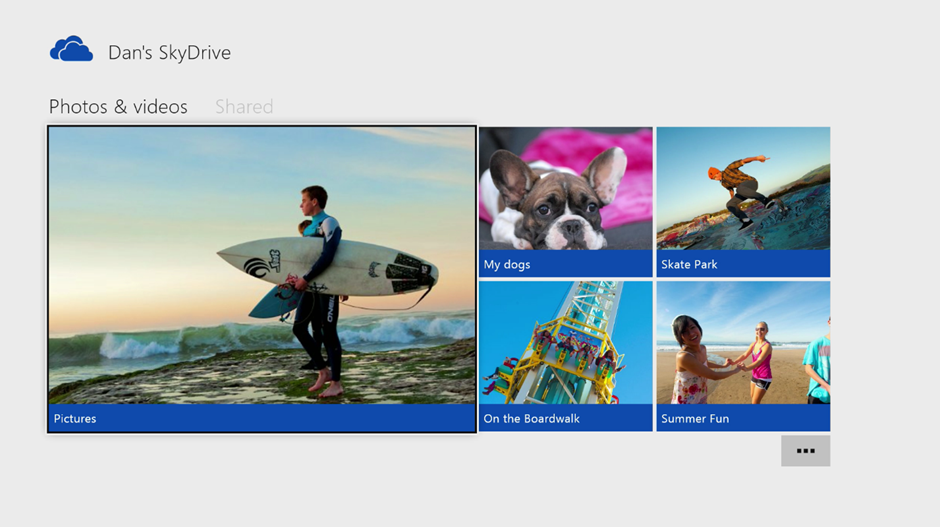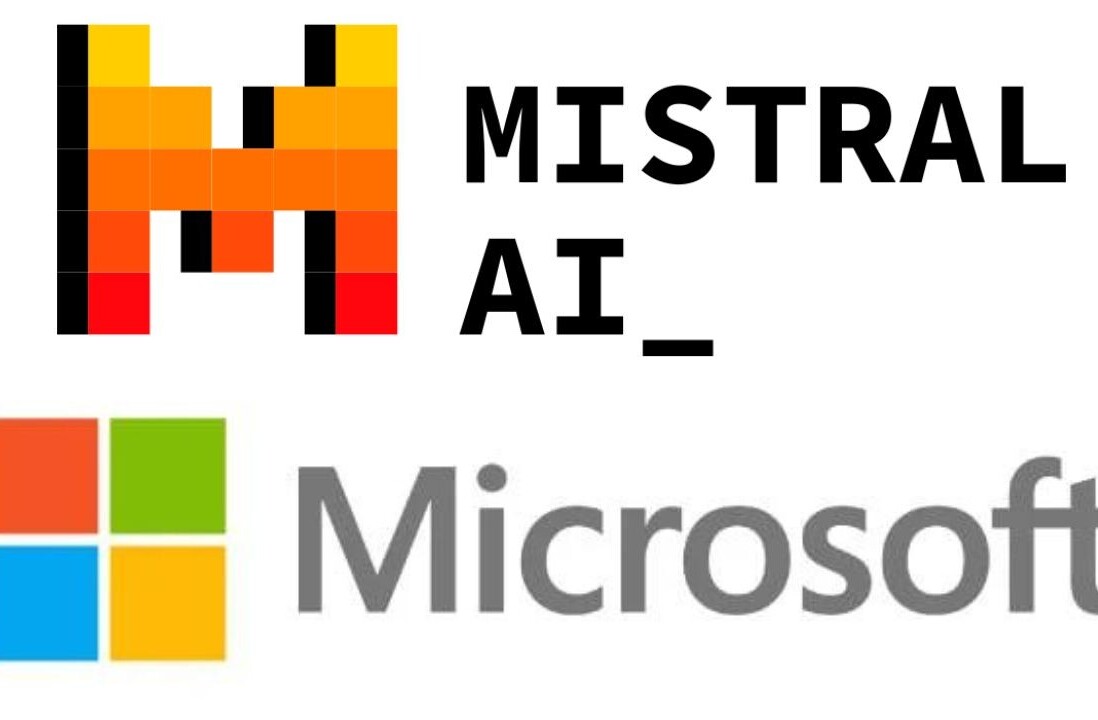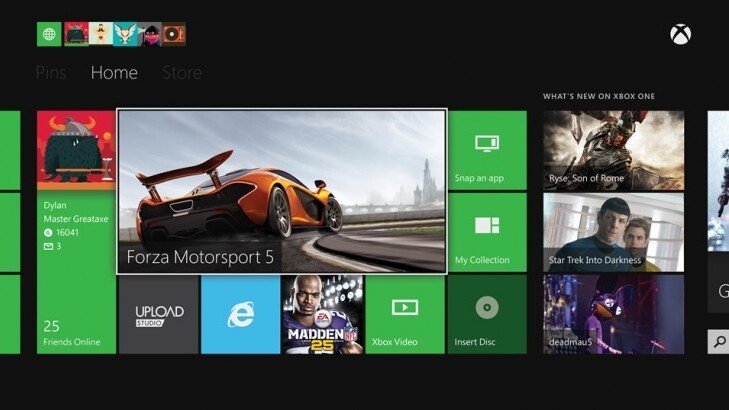
Now that the Xbox One has finally hit the market, one of Microsoft’s visions has almost come true. For years, the company has been trumpeting its long-term plan to have ‘three screens and a cloud‘ for its flagship products, but until recently it had failed to deliver due to ageing devices (the Xbox 360), disjointed teams and products that fell short of what consumers wanted (Windows 8).
With Windows 8.1, Windows Phone 8 and the Xbox One, Microsoft finally has a family of products on its hands that truly work together seamlessly. Not only that but Microsoft is polishing the products so finely that, say, the Xbox One can control your TV and sound system to provide the ultimate entertainment experience. So, you don’t need to do anything more than utter the words “Xbox on” and the TV lights up.
The console takes five seconds to be ready for action; Kinect automatically picks up who turned the console on and signs them in automatically, taking away any friction from the experience that’s possibly left. It’s impressive technology that helps get straight to the source of what users want to do; consume content and play games.
Once you’re in, you don’t need a controller either, since you’ve probably already got one in your pocket. The Xbox One Smartglass app means that to quickly navigate around or enter text, you can simply use your phone. A few years ago, the idea that you could control a console with a tiny computer that fits in your pocket was just a dream, but it’s now entirely possible and it’s good.
What’s interesting is Microsoft has learnt from past mistakes and hasn’t chosen to shackle such an awesome piece of functionality to Windows devices with the app being available for iOS and Android as well as Windows 8.1 and Windows Phone at launch. This is an important lesson for the company that will hopefully follow through eventually to official Office applications for other platforms, too.
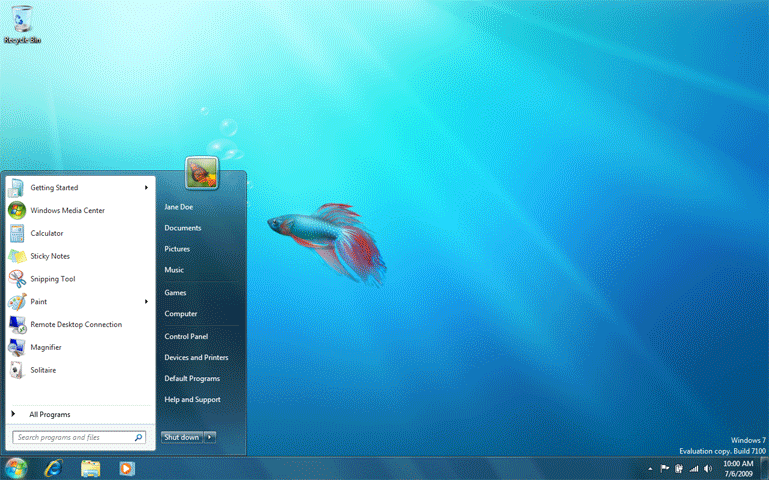
Windows 7, Xbox 360 and Windows Phone 7 interfaces in 2009
One of the most important parts of Microsoft’s ‘three screens’ strategy was cleaning up user interfaces across its devices and platforms. Just three years ago, the company didn’t have a strategy for consistent interfaces which was because of the way each department operates in a silo that doesn’t share ideas or visions with other teams.
The Xbox team was a good example of this; the group was kept separate from the rest of the company so that it was able to foster new ideas and behave like a startup, moving quickly and allowing room to make mistakes and learn. Unfortunately, this also meant that their products often didn’t align with others coming out of the company and sometimes didn’t even play nice with them that well.
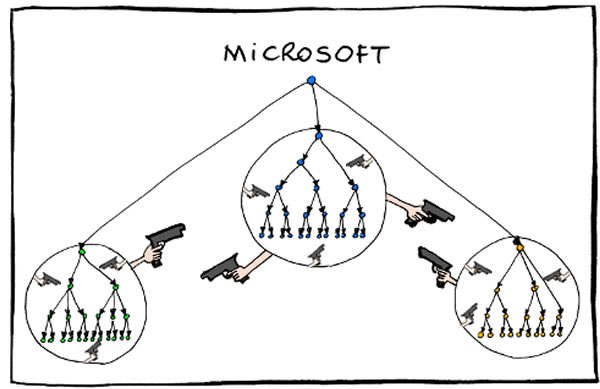
Comic via Bonkers World
If you look at the interfaces that the company was using in 2009 with Windows 7, Xbox 360 and Windows Phone 7 and didn’t know any better, you likely wouldn’t have guessed that Windows 7 and the Xbox 360 had come from the same company. In fact, the products didn’t look like they were related at all which is likely because each department had a gun to one another’s head.
Those walls have finally fallen with the Xbox One. It’s obvious that there’s a strategy for consistency and with its “One Microsoft” plan for departments to work together rather than alone. When looking at a Microsoft product, the average consumer should now be able to deduce that the products came from the same company and that they do, in fact, work together.
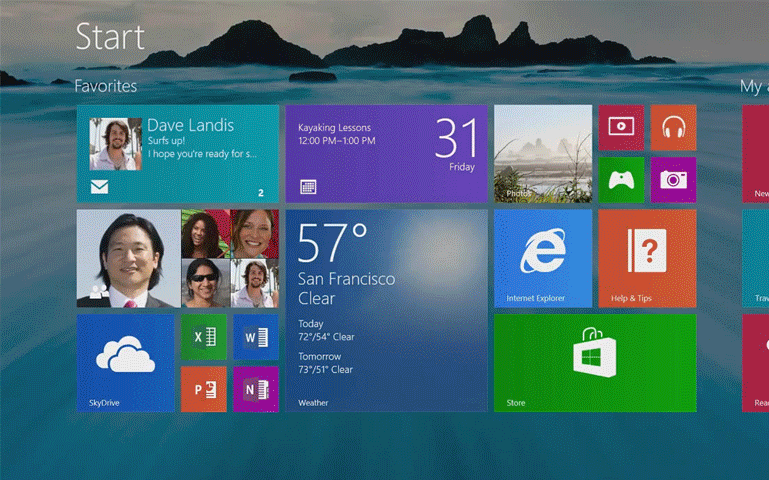
Windows 8.1, Windows Phone 8 and Xbox One in 2013
Living in a world where Microsoft’s products are consistent is magical; the same snapping metaphor used in Windows 8.1 works on the Xbox. Applications like Skype work, look and feel the exactly the same across platforms. The only other company we’ve seen pull off this level of cross-device consistency is Apple and this is the first time that it’s reasonable to say that the Microsoft ecosystem is actually delightful to be a part of.
There is one part of Microsoft’s strategy that could do with some further integration; it’s much touted cloud. Despite talking about the power of cloud with the Xbox One, it feels unrealized so far. Windows boasts the capability to synchronize settings such personalized colors and wallpapers between computers but the Xbox doesn’t seem to tap into this at all yet, nor does it bring any of the removed features that were going to allow gamers to loan and trade games over the internet.
Even basic functionality such as synchronizing Skype conversations or throwing videos from Windows 8 devices onto the console with ease isn’t there yet but undoubtedly will come over time. Unfortunately, without the consistency of these services from Windows, the console feels like it can do much more than it currently can with the day one software which makes it feel unpolished and rushed. Despite all the negatives, some integration such as the functionality Skydrive brings for quickly uploading videos and accessing shared files across PC, mobile and Xbox is impressive and something that Sony would have a very hard time building into the PlayStation 4.
Therein lies the magic of the Xbox One; Microsoft’s toils have wrought an ecosystem of devices and services that Sony could never hope to build for the PlayStation 4. With applications for almost all major platforms, almost every device on the planet will be compatible with the Xbox One in some form going forward.
As the company builds out the ecosystem even further and their services such as Skype, Skydrive, Xbox Music and Xbox Video become more widely used simply due to the integration in Windows, consumers are going to quickly find themselves locked into an ecosystem that works together so simply that it will keep them there.
Microsoft might be late to the party, but it’s quickly imitating Apple’s obsessive approach to platforms by offering great services and experiences across devices and locking users in for the long term. The twist is, Apple hasn’t quite moved past the “hobby” phase with the Apple TV, so it may have missed its opportunity altogether to beat Microsoft to the living room.
As Microsoft moves into the future with its new wave of products called ‘Threshold‘, rumored to bring the integration across platforms even closer, it’s only going to get better for consumers.
The Xbox One is only taking its very first steps. Over time, it’ll evolve to be even more tightly woven into other products and as third-party applications begin taking advantage of the mobile, desktop and console spaces it’ll become even more compelling.
Get the TNW newsletter
Get the most important tech news in your inbox each week.

